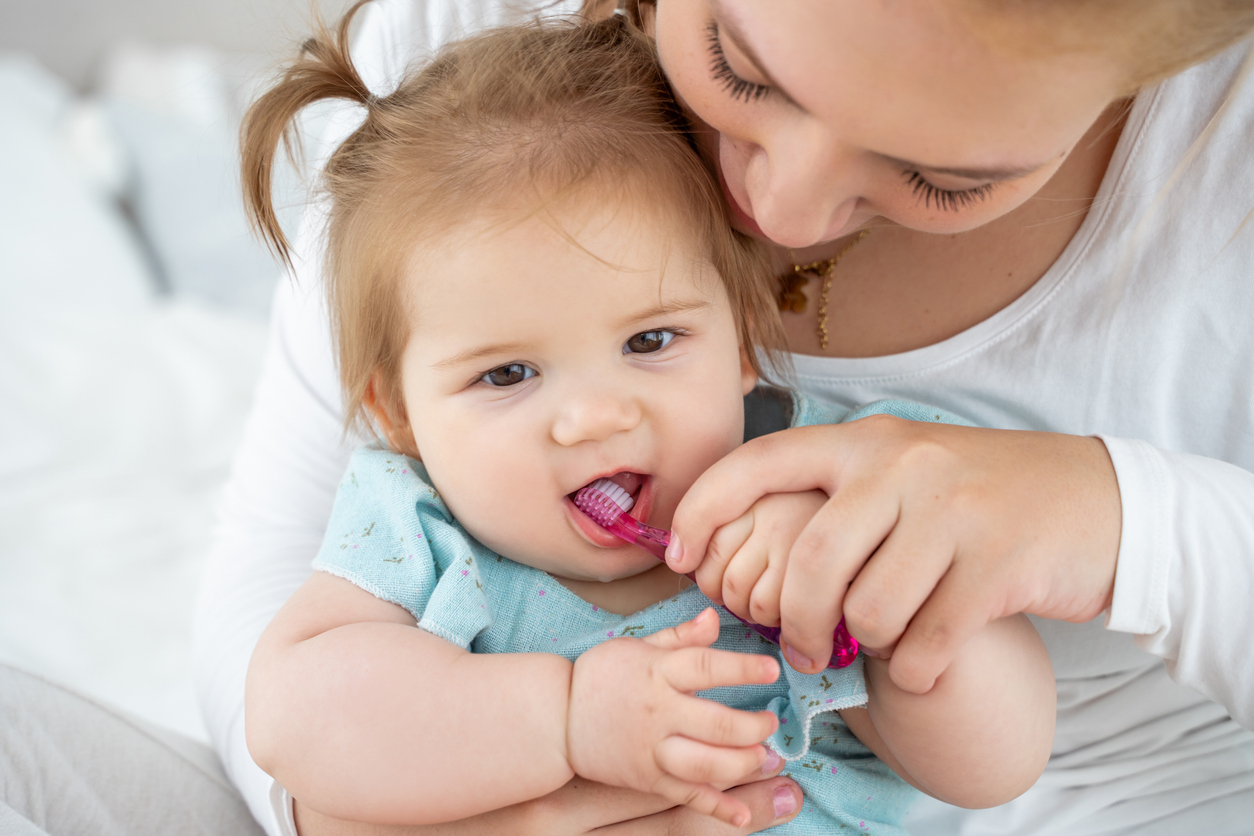While baby teeth are temporary, they’re still important. Your child’s baby teeth ensure that there’s space for their adult teeth to come in and allow them to chew and speak properly. One of the most common causes of tooth decay in young children is known as “bottle rot” or “baby bottle tooth decay.” Baby bottles, especially when they’re used to give children juices, milk or formula, can cause tooth decay in infants and toddlers. Schedule an appointment at Children’s Dentistry if you’re worried that your child’s baby teeth are showing signs of bottle rot.
Bottle rot: A quick overview
Bottle rot is a dental condition caused by frequent and extended contact of sugary liquids with a baby’s teeth. It usually affects the upper front teeth but can also impact other teeth. The sugars in the liquid feed harmful bacteria that produce acids, causing tooth decay.
Decay from baby bottles can be caused by the use of baby bottles as pacifiers or prolonged use of the bottle during naps or bedtime. When children fall asleep with a bottle in their mouth, the liquid pools around their teeth, increasing the risk of decay.
Prevent bottle rot with these tips
The best way to prevent bottle rot is to limit your child’s exposure to sugary liquids. Try these tips to protect your baby’s teeth:
- Don’t use bottles as pacifiers or let your child walk around with a bottle in their mouth.
- Only use the bottle for feeding and avoid prolonged usage during naps or bedtime.
- Dilute juices with water to reduce sugar content.
- Use a clean damp cloth or gauze to wipe your baby’s gums after each feeding.
- Introduce a sippy cup around six months to transition away from bottles and prevent prolonged exposure to sugary liquids.
- Start brushing your child’s teeth as soon as they appear, using a small smear of fluoride toothpaste the size of a grain of rice and a soft-bristled brush. At the age of three, you can increase the amount to a pea-sized amount.
How to spot bottle rot: Symptoms to look out for
Common signs and symptoms of bottle rot include:
- White, brown or black spots on the teeth
- Discoloration or staining of the teeth
- Bad breath or a foul taste in the mouth
If left untreated, baby bottle tooth decay can cause pain, infection and even tooth loss in severe cases.
What treatments are available for bottle rot?
Unfortunately, once tooth decay has occurred, it cannot be reversed. However, early intervention can prevent the progression of decay and protect your child’s remaining teeth. A pediatric dentist at Children’s Dentistry may recommend various treatments depending on the severity of the condition, such as fluoride treatment, fillings or crowns.
Identifying bottle rot signs? Children’s Dentistry can assist!
If you suspect your child may have bottle rot, it’s time to talk to a pediatric dentist at Children’s Dentistry. Gentle, compassionate care that’s tailored to your child’s needs is our specialty. We’ll address any decay issues and prevent further problems. Schedule an appointment online today. Let us help protect your child’s precious smile.

